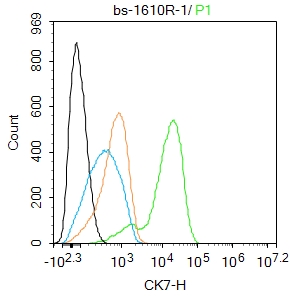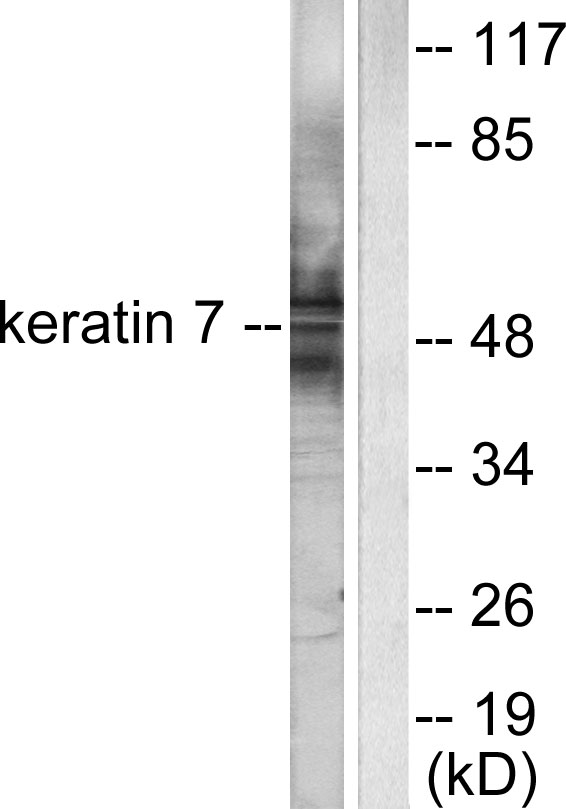Mouse anti Cytokeratin 7 / Keratin K7
MUB0315P-CE/IVD
ApplicationsFlow Cytometry, Western Blot, ImmunoCytoChemistry, ImmunoHistoChemistry, ImmunoHistoChemistry Frozen
Product group Antibodies
ReactivityCanine, Feline, Hamster, Human, Mammals, Mouse, Rat, Zebra Fish
TargetKRT7
Overview
- SupplierNordic-MUbio
- Product NameMouse anti Cytokeratin 7 / Keratin K7
- Delivery Days Customer7
- Application Supplier NoteRCK105 is suitable for immunoblotting, immunocytochemistry on permeabilised cells, immunohistochemistry on frozen tissues and flow cytometry. Optimal antibody dilution should be determined by titration; recommended range is 1:100 - 1:200 for flow cytometry and immunohistochemistry with avidin-biotinylated Horseradish peroxidase complex (ABC) as detection reagent, and 1:100 - 1:1000 for immunoblotting applications.
- ApplicationsFlow Cytometry, Western Blot, ImmunoCytoChemistry, ImmunoHistoChemistry, ImmunoHistoChemistry Frozen
- Applications SupplierFlow Cytometry;Immunocytochemistry;Immunohistochemistry (frozen);Western Blotting
- CertificationResearch Use Only
- ClonalityMonoclonal
- Clone IDRCK105
- Gene ID3855
- Target nameKRT7
- Target descriptionkeratin 7
- Target synonymsCK7, K2C7, K7, SCL, keratin, type II cytoskeletal 7, CK-7, cytokeratin 7, keratin 7, type II, keratin, 55K type II cytoskeletal, keratin, simple epithelial type I, K7, sarcolectin, type II mesothelial keratin K7, type-II keratin Kb7
- HostMouse
- IsotypeIgG1
- Protein IDP08729
- Protein NameKeratin, type II cytoskeletal 7
- SourceRCK105 is a mouse monoclonal IgG1 antibody derived by fusion of SP2/0-Ag14 mouse myeloma cells with spleen cells from a BALB/c mouse immunized with cytokeratins from the human bladder carcinoma cell line T24.
- ReactivityCanine, Feline, Hamster, Human, Mammals, Mouse, Rat, Zebra Fish
- Reactivity SupplierCanine;Feline;Caprine;Hamster;Human;Mouse;Rat;Zebrafish
- UNSPSC12352203






